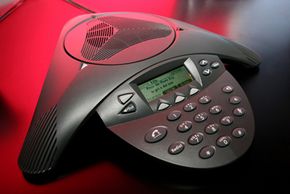Audio controls can make life easier if you're hosting a conference call. With them, you can adjust sound levels for participants, mute and unmute individuals, and make other adjustments, such as locking the conference to keep out uninvited participants. As you explore conference call options and explore the role of Voice over Internet Protocol (VoIP) calling, the audio controls available with each option are well worth considering.
Conference calls, or teleconferences, can be a real time saver or a real headache. But audio controls can help make the experience more positive. Without them, you may have no way to adjust for:
Advertisement
- The participant who puts himself on hold, leaving everyone else listening to elevator music.
- The soft-spoken participant who makes good points -- but leaves everyone straining to hear.
- The participant with the booming voice who talks over others.
- People with similar voices talking during the discussion -- and no way to tell them apart.
- Background traffic, airport or office noise from one participant's location.
- Participants entering and leaving the call without anyone knowing.
- An unexpected coughing fit that you have as moderator.
- Several participants' need to break into a private "mini-conference" during the actual conference.
Fortunately, with user-friendly audio controls, you can handle all of these situations and keep your conference running smoothly without outside distractions. And depending on the software or hosting service you're using, you can do that from your office desktop, your laptop on the road, any telephone or even mobile devices like a BlackBerry, iPhone, other personal digital assistant (PDAs) or smartphone.
In this article, we'll look at your conference call options and specifically at audio control options. We'll also offer suggestions for what to do when audio controls are limited. Let's start by exploring conference call options.
Advertisement



